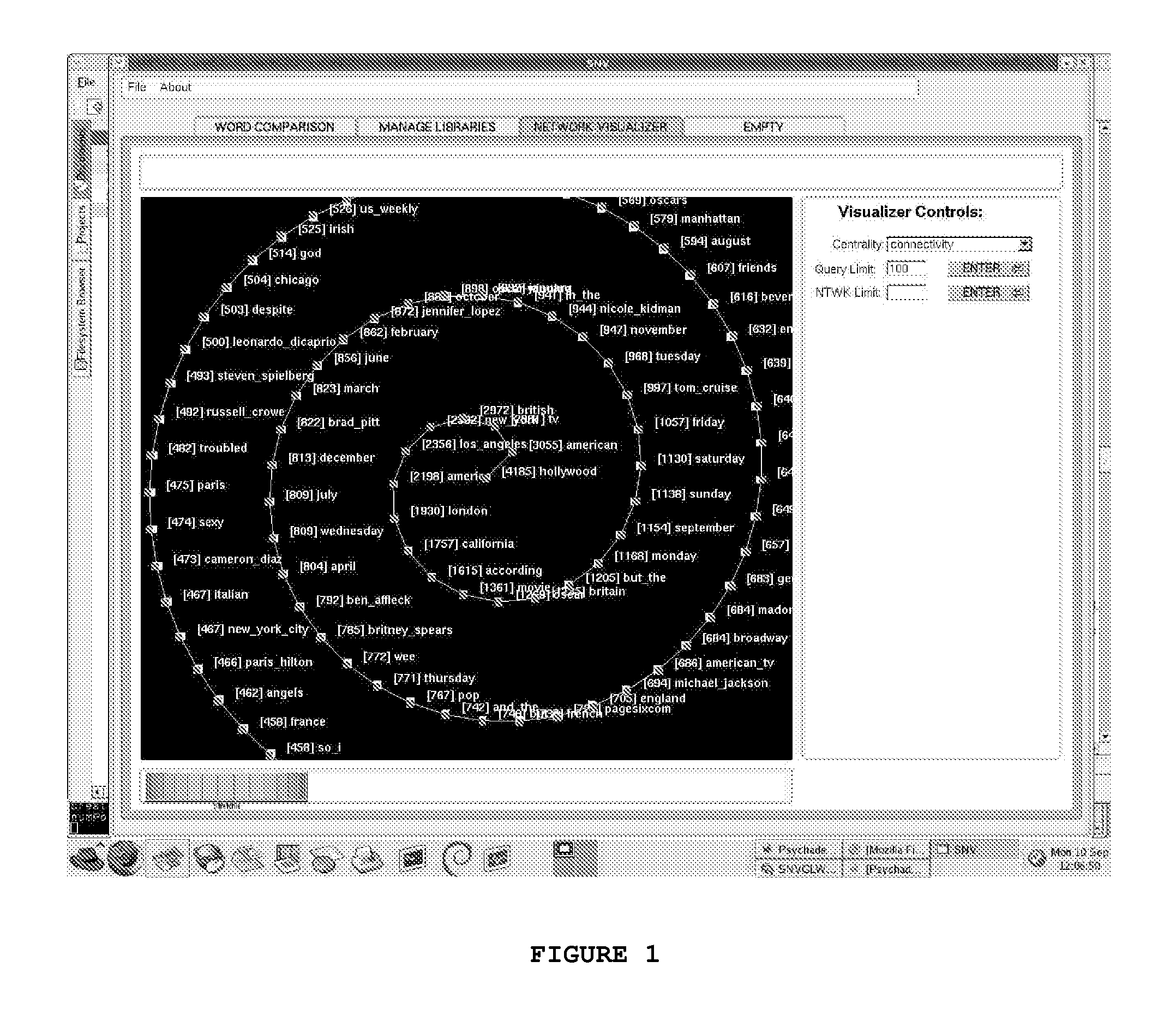Method and system for extracting and characterizing relationships between entities mentioned in documents
a relationship and document technology, applied in the field of data analysis, can solve the problem that there are no tools available to assist analysts
- Summary
- Abstract
- Description
- Claims
- Application Information
AI Technical Summary
Benefits of technology
Problems solved by technology
Method used
Image
Examples
Embodiment Construction
[0031]In a general aspect of the invention, a software system receives or retrieves a corpus of documents to be scanned for derivable data. The contents of each document in the corpus are scanned for words that conform to predetermined criteria for identifying entities. Each word found in the document that conforms to the criteria for an entity is tracked. This may be done by creating for each entity a corresponding entry in a database of entities as well as a counter to track how many documents mention that entity. This may also be done by using an array and a series of linked lists that, again, tracks how many documents mention each entity. Any entity found in the document which already has an entry in the entity database or in the array / linked list system will have its counter incremented for every document that refers to that entity. An entry in the database is also created for each document, each document entry noting the document number as well as which entities are mentioned ...
PUM
 Login to View More
Login to View More Abstract
Description
Claims
Application Information
 Login to View More
Login to View More - R&D
- Intellectual Property
- Life Sciences
- Materials
- Tech Scout
- Unparalleled Data Quality
- Higher Quality Content
- 60% Fewer Hallucinations
Browse by: Latest US Patents, China's latest patents, Technical Efficacy Thesaurus, Application Domain, Technology Topic, Popular Technical Reports.
© 2025 PatSnap. All rights reserved.Legal|Privacy policy|Modern Slavery Act Transparency Statement|Sitemap|About US| Contact US: help@patsnap.com



